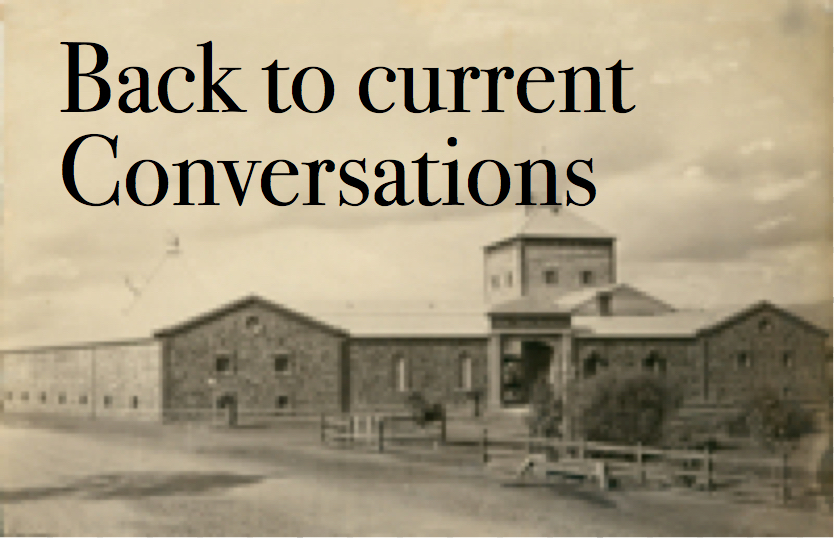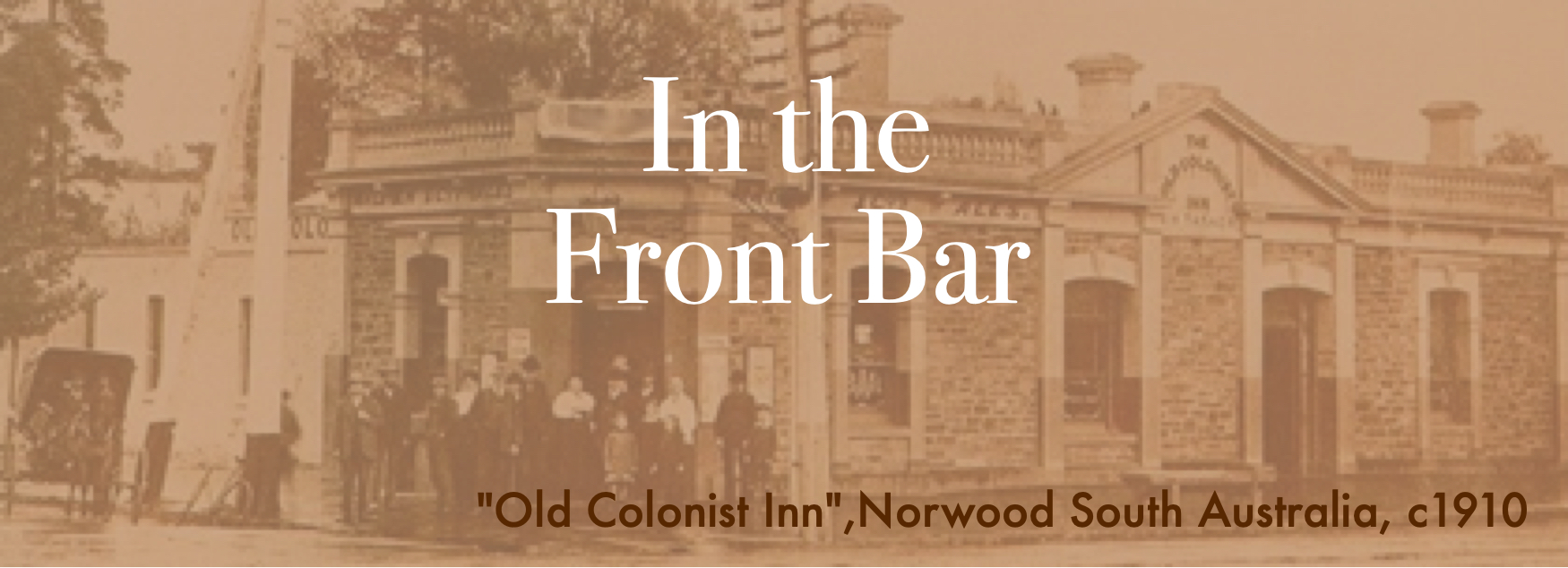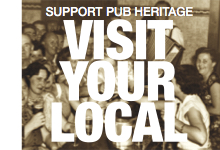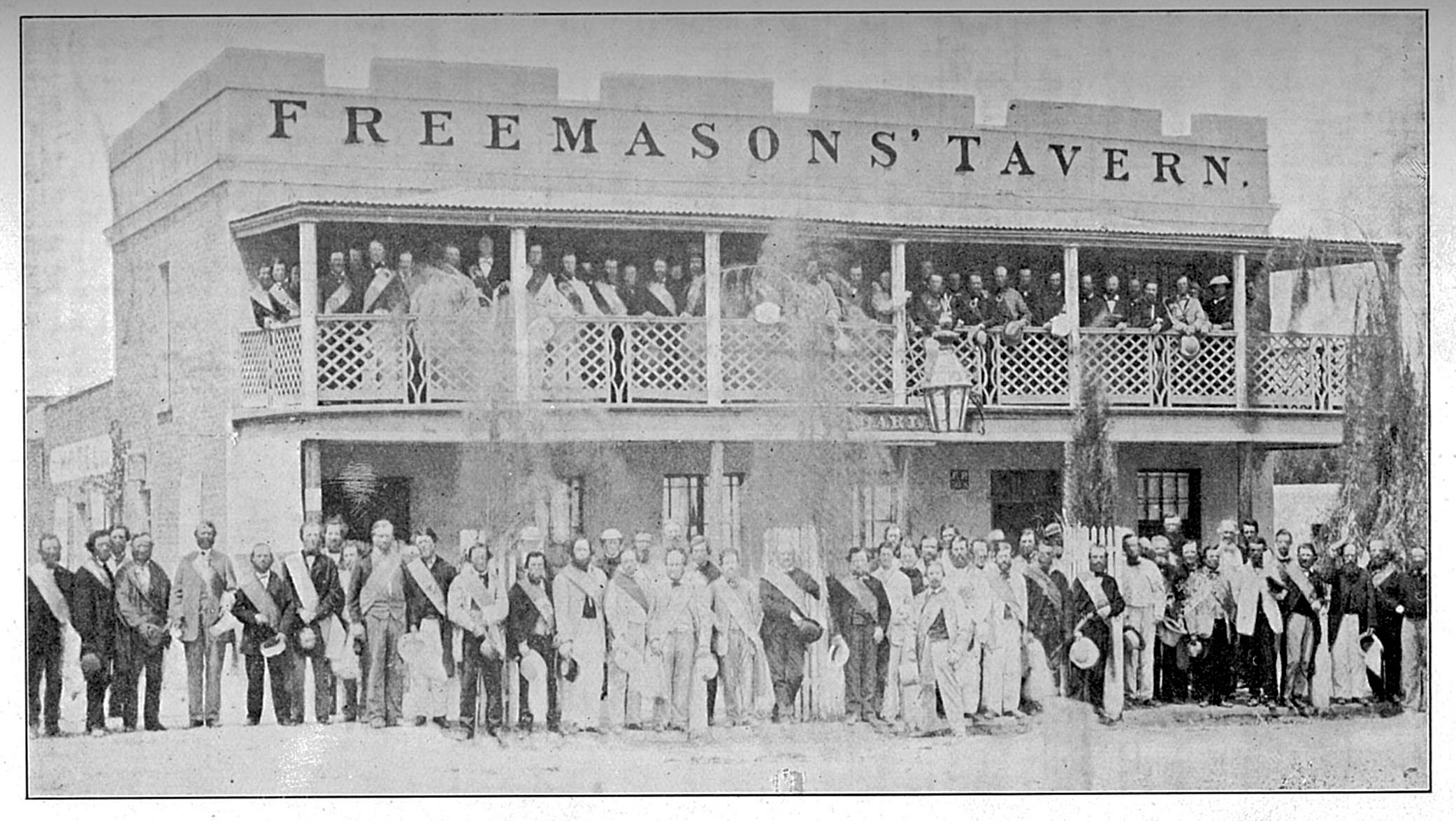



Celebrating Saint Andrew's Day and early colonial South Australian pubs
November 30 is Saint Andrew's Day, the national day of Scotland, originally a religious festival but since at least the eighteenth century and amongst those who subscribed to the general ideals - rationalism, liberalism, education - of the Scottish Enlightenment, a secular celebration of Scottish identity and achievement, usually observed by the Saint Andrew's Dinner.
The first recorded Saint Andrew's Day Dinner in South Australia was held on 30 November 1838, less than two years after white settlement. According to the one very brief report, the dinner was attended by over 60, "a respectable body of Scotsmen"; at the time the white population of South Australia was about 5000 of which an estimated 350 (about 7%) were Scots. Unfortunately there is no record of the "many interesting speeches delivered on the occasion". However, judging partly by the short report of the first Dinner and more by the detailed description of the Dinner organised by the same committee and held in 1840, the early South Australian Saint Andrew's Dinners conformed generally to the convivial meetings of the literary and scientific clubs of Enlightenment Edinburgh, Glasgow and Aberdeen - a more or less formal programme of speeches and toasts and singing and a lot of eating and drinking - and they were almost always held in the relatively egalitarian environment of pubs.
|
The first colonial Dinner was held at Isaac Sladden's Adelaide Tavern in Franklin Street (close to the current site of the Greek Orthodox Cathedral of Archangels Michael and Gabriel, which is ironic since St Andrew is also the patron saint of Greece); the hotel boasted a second-story theatre or ball-room that could "dine 200 persons". Subsequent venues for these Dinners included Fordham's Hotel (later the Sturt Arcade Hotel) in Grenfell Street (1840), Payne's Hotel (the Australian Arms/Auction Mart Tavern...Exchange Hotel) in Hindley Street (1843, 1844 and 1846), Stewart's Hotel (the Golden Fleece Inn) in Currie Street (1847 and 1848), the Freemason's Tavern in Pirie Street (1851, 1852, 1853), the Napoleon Bonaparte (Caledonian, Napoleon) in King William Street (1854, 1855), and the Norfolk Arms in Rundle Street (1861). With the exception of the occasional Scottish landlord, none of these pubs had any strong connection with Scotland or with the Saint Andrew's Society. In 1862 for the first time the Saint Andrew's Dinner was held in a venue (the Adelaide Assembly Rooms) other than a pub. It's arguable that Saint Andrew's Dinners went down-hill from then.
Although the focus of the meetings changed as different organisations assumed responsibility for the Dinner - from 1847 the Saint Andrews Society/the promotion of Scottish immigration and from 1862 the Caledonian Society/Highland language, literature and music - the more sociable parts of the programme remained: 'Scottish' music including piper(s), song and poetry, Scottish food including haggis and oatcakes, mountain dew/whisky and Robert Burns. Lots of Burns although not exclusively so. |
|

Payne's Auction Mart Tavern on the left c.1844 [S T Gill, Hindley Street, State Library of South Australia B-23161] The eastern side of the tavern is seen more clearly in Noyce's lithograph of the Auction Mart, 1845 [State Library of South Australia B-68846] |
Interestingly colonial South Australians do not seem to have celebrated Robert Burns at a public event comparable to the Saint Andrew's Dinners, at least until the centenary of his death in 1896. However Burns was consistently represented in the celebration of the Scottish national day through recitations of his poetry and songs and speeches, usually the prelude to a toast to Scottish Literature or to Burns himself. As early as 1844 the Saint Andrew's Day diners toasted "the Immortal Memory of Robert Burns...the poet not only of Scotland but the poet of nature and the heart" and a reverential toast to Burns, alone or with Scott, was a usual feature of most subsequent Dinners. Unfortunately, by the time Burns' Suppers succeeded Saint Andrew's Dinners as the public expression of Scottishness they were more private events organised by one or another Scottish society for their members and, to my knowledge, rarely held in pubs.
...and a short note on the Freemasons' Tavern and Freemasonry
Saint Andrew's Dinners were held in 1851, 1852 and 1853 at (Mr) Florence Darling's Freemason's Tavern which stood, from 1841 until 1978, between Wyatt Street and Gawler Place on the south side of Pirie Street. The Freemasons' Tavern also hosted Masonic meetings, balls and other gatherings of The Craft regularly from 1844 until 1853 (the opening of the first Masonic Hall) and intermittently after that until the early twentieth century.

Freemasons and the Freemasons' Tavern, about 1872 [From Charles Glover: A history of first fifty years of Freemasonry in South Australia, 1834-1884, 1916?, fp.48]
A cursory survey of the relevant press reports suggests that there was no significant correlation between the owners or licensees of the pubs that hosted these events, the organisers and attendees of the Saint Andrew's Dinners and members of Masonic lodges. Certainly none of the owners or licensees of the Freemasons' Tavern seem to have been office-holders in either the Saint Andrew's Society or the Freemasons. The reasons why venues such as the Freemasons' Tavern appealed to the Saint Andrew's Society or to the Freemasons were apparently more mundane: a large room (ballroom, theatre), privacy (or secrecy in the case of the Lodges), good food and presumably a good price. Plus, until the introduction of 'club' licenses in 1891, pubs were uniquely licensed for the sale of liquor to and consumption by the public.
Posted 30 Novembe 2021 Original content © Craig Hill 2021
